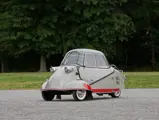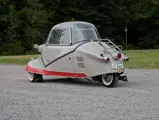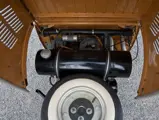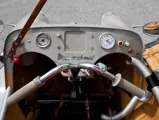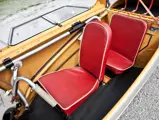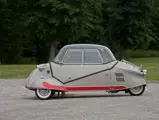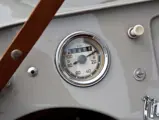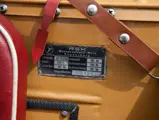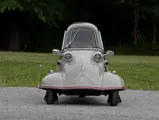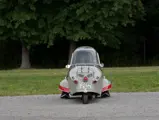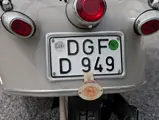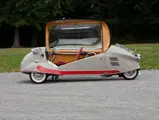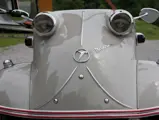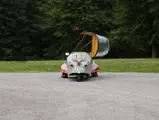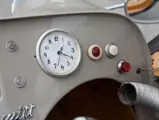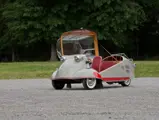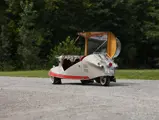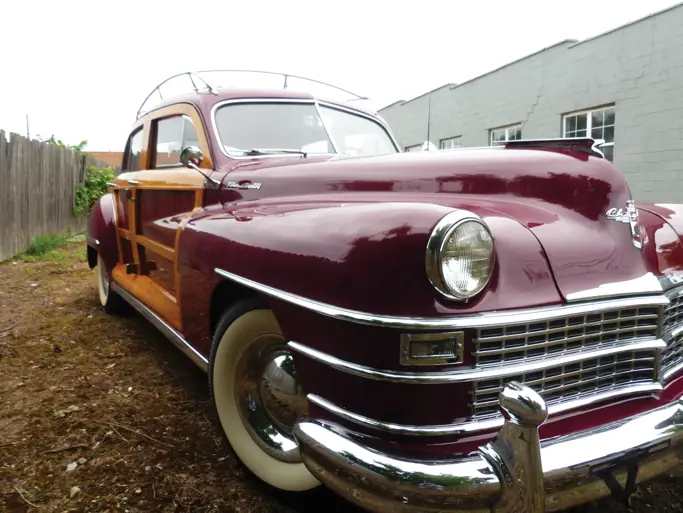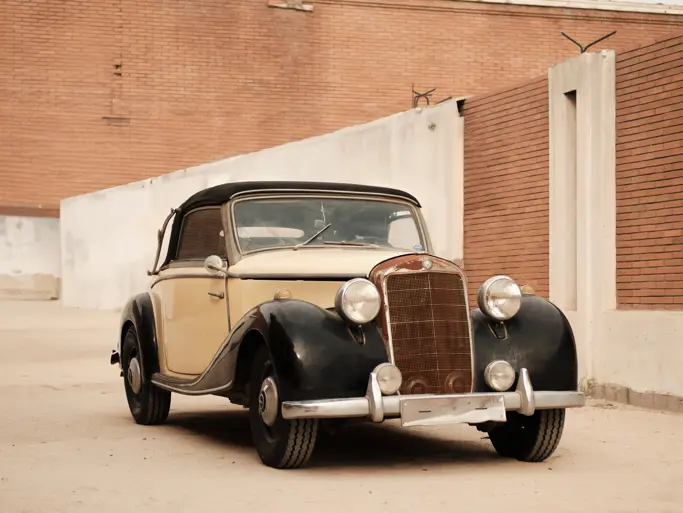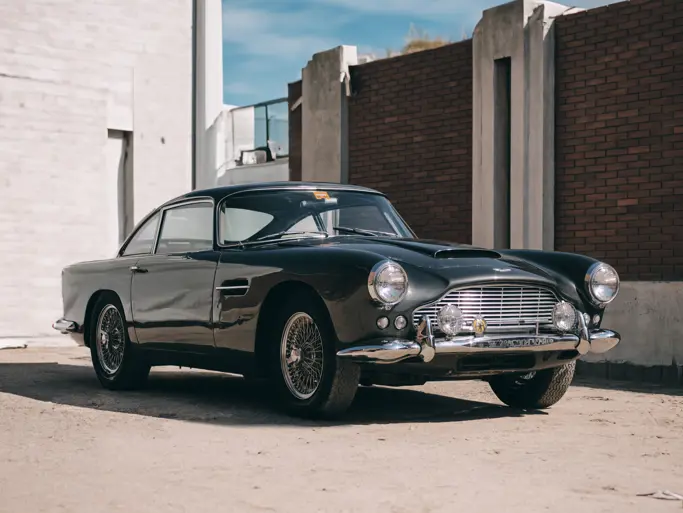Hershey 2012
1954 Messerschmitt KR175
{{lr.item.text}}
$41,250 USD | Sold
 | Hershey, Pennsylvania
| Hershey, Pennsylvania
{{internetCurrentBid}}
{{internetTimeLeft}}

9 bhp, 175 cc Fichtel and Sachs mid-mounted single-cylinder two-stroke engine, rear-wheel drive, and four-speed mechanical transmission with four-speed reverse. Wheelbase: 80 in.
• Formerly of the Bruce Weiner Microcar Museum
• Optional electric start in place of the standard kick-start
• Fully restored; winner of numerous AACA First in Class awards
About as quirky a motor vehicle as ever produced, the Messerschmitt KR175, or Kabinenroller, was one of the many unusual microcars launched in Europe following WWII to fill a pressing need for runabout transportation that was inexpensive to buy and economical to operate. The Messerschmitt KR175 was built from 1953 to 1955 and later replaced by the similar KR200, which continued until 1964. With a total of more than 55,000 built, the KR Kabinenrollers were among the most popular of all the microcars.
Reflecting designer Fritz Fend’s aeronautical background, the KR175 was a two-seater with an aircraft-like cockpit, the passenger sitting behind the driver, and with a hard bubble-canopy on the majority of Kabinenrollers built. Steering was motorcycle-like in concept, using handlebars. The 175 cc engine drove a single rear wheel through a four-speed transmission. The method used for reversing effectively resulted in the microcar having four reverse speeds. The Sachs engine had kick-starting and electric starting as an option, as found on this KR175.
The KR175 being offered was formerly part of the renowned Bruce Weiner Microcar Museum. It had undergone extensive restoration and is beautifully finished in light grey with offsetting lower-body accents in red, matching red upholstery, and whitewall tires. In its more recent ownership, it has garnered several class-winning awards at AACA meets, including the 2008 National Spring Meet and the 2008 Hershey Fall Meet.
Production of the KR175 model was between 15,000 and 20,000 (estimates vary), so it is likely that this gem is rarer than the surviving KR200 versions. It presents a remarkable opportunity to possess and show a delightful and roadable microcar, a significant part of Germany’s post-war motoring history.

